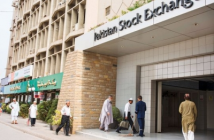Is the Indian economy shining or not? Conflicting views are being expressed by analysts.
In a research report, Motilal Oswal Financial Services Ltd said India is shining amidst a challenging backdrop.
“India has emerged as a shining star in CY22 (calendar year 2022) with healthy outperformance amid varied global headwinds on macros, inflation, rates, currency and geopolitics,” Motilal Oswal said.
While most global equity markets are down 20-25 per cent India is flat and steady (in local currency) driven by several key factors such as: a) strong corporate earnings growth over the last two years and expectations of a healthy performance over FY22-24; b) resilient domestic equities inflow and c) deft macroeconomic management by the Reserve Bank of India (RBI) and the government that has helped India stand out in an otherwise volatile and panic-stricken world, Motilal Oswal said.
Sectors focused on domestic consumption/investments are likely to outperform the sectors dependent on global demand/cyclicals/commodities.
According to Motilal Oswal, the domestic demand is expected to revive starting the festive season and propel discretionary consumption.
The coordinated repo rate hike cycle across the globe is now moving closer towards its final leg, the inflation is expected to peak barring a major unforeseen spike-up in geopolitical dynamics, Motilal Oswal said.
According to the report, the volatility will remain elevated but directionally, the trends will get better with various factors like policy rates, currency, bonds and geopolitics.
Motilal Oswal also expects domestic equity inflows to remain robust and at the margin, as global climate gets better, foreign institutional investors (FII) selling can moderate too.
On the other hand, Kotak Securities Ltd in its report said no country is an island and the growing rhetoric of India decoupling from the rest of the world may not bear out.
While India could fare well relatively, policy steps (and missteps) of developed markets will reflect in external (CAD/BOP/INR) and internal (inflation/fiscal) balances, which will be headwinds for domestic growth, Kotak Securities said.
According to Kotak Securities report, India faces headwinds from imminent global demand/trade slowdown, risks of higher-for-longer global inflation/rates, dollar strengthening, and enduring geopolitical tensions.
More than domestic factors, external factors such as global slowdown, geopolitics-led risks to energy prices, dollar strengthening, and higher-for-longer global inflation and rates (implying risks of lower-for-longer global growth) will weigh on India’s macro outlook.
In the near term, the extent of Indian rupee depreciation and RBI’s response through rates and foreign exchang reserves will be watched. Over the medium term, markets will evaluate the extent of growth recovery, success in capping inflation pressures, and managing twin deficits, Kotak Securities added.
Global slowdowns typically transmit through (1) trade, (2) commodity prices, (3) capital flows, and (4) financial sector channels.
“Any lower exports coupled with a relatively strong domestic growth (hence higher imports) could risk worsening the external balance. Exports have helped push GDP back to pre-pandemic levels,” Kotak Securities said.
India can benefit from recession-led fall in commodity prices. But energy prices’ outlook will be uncertain given the geopolitical tensions. Higher energy prices may negate much of India’s benefits from a global slowdown, the report added.
The global macro environment has changed with the return of inflation. Failure to ignite inflation with more than a decade of ultra-loose monetary policy has shifted to central banks struggling to get inflation under control.
Contrary to the past decade, the next few years could be marked by higher-than-usual global inflation/interest rates driven by (1) shifting to fiscal policy for driving growth, (2) relatively muted growth and disinflationary impulses from China, and (3) continuing (and possibly growing) geopolitical challenges.
India’s relative attractiveness over the medium to long term, among other factors, will depend on (1) the manufacturing sector becoming key driver of growth (PLI and China+1), and (2) private sector investment cycle revival driven by manufacturing sector growth.
Near-term policies should be geared towards (1) reducing fiscal deficit while improving on public infrastructure spending, (2) reverting to neutral liquidity and positive real rates, and (3) ensuring trade openness, Kotak Securities said.





